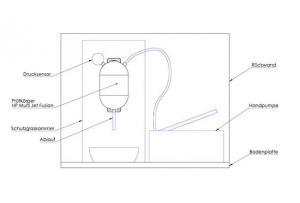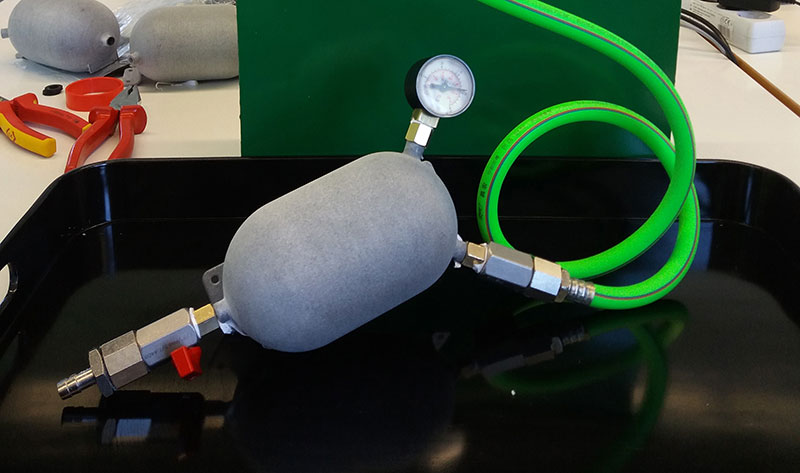Pressure vessel production with HP Multi Jet Fusion
industrialpartners offers its customers the most innovative processes for the production of small and
middle part series. In addition to conventional injection molding, we also use the latest 3D printing processes to produce our parts – such as Multi Jet Fusion technology (MJF) from HP.
This revolutionary 3D printing process has many advantages over conventional laser sintering. Parts produced with HP MJF have a higher density, an erosion-like surface structure and can be manufactured in the shortest possible production times.
For you, this means: non-series production of plastic parts and assemblies on an industrial scale at attractive prices!

We produced several tanks and then tested the resulting containers. For the pressure tightness test, the test specimens made with HP MJF were filled with water and permanently pressurized to 20 bar for four months using a hand pump.
The result is astounding for an additive manufacturing process: no moisture leakage and no pressure loss – even over a long period of time!
If you compare pressure vessel production with HP MJF with other processes, such as conventional metal vessels or conventional plastic production methods, this process has significant advantages:
With HP MJF, tanks can be manufactured in any shape (e.g. spherical, cylindrical or cubic), which guarantees high wear resistance and therefore suitability for use on an industrial scale. The pressure vessels produced in this way can be used for different pressure ranges depending on the wall thickness dimensioning. Thanks to the process-related easy scalability, freely selectable shape design and the possibility of integrating different coupling pieces in one production step, the production of e.g. shape-complex tanks and pressure vessels is no longer a problem at all. In addition, pressure vessel production with HP MJF as an alternative to conventional processes remains comparatively inexpensive!
In a separate study by HP, it was also demonstrated that parts produced using the MJF process have a higher density (1.01 g/cm³) than parts produced using the conventional laser sintering process (0.90-0.95 g/cm³). The polyamide HD 3D PA 12 used in the MJF also has significantly lower porosity than the SLS PA 12 material commonly used in the laser sintering process. It enables the production of ultra-thin layers of just 80 micrometers and thus excellent detail fidelity and outstanding surface quality. It also scores highly in terms of chemical resistance: Even hot water, alcohol, aliphatic hydrocarbons (including petrol components), engine oil and DOT 3 brake fluid cannot harm the PA 12 material used by Multi Jet Fusion. But that’s not all: the pressure vessels created with HP MJF have also passed IP66 and IP67 tests.
Conclusion: HP has revolutionized pressure vessel production with the Multi Jet Fusion process and we
are proud to be able to offer this new technology to our customers!
Two documentations are available for further information.
For further detailed information, please contact our managing director
Jens Arend(ja@industrialpartners.de) or by telephone on +49 69 82 37 247 – 0

